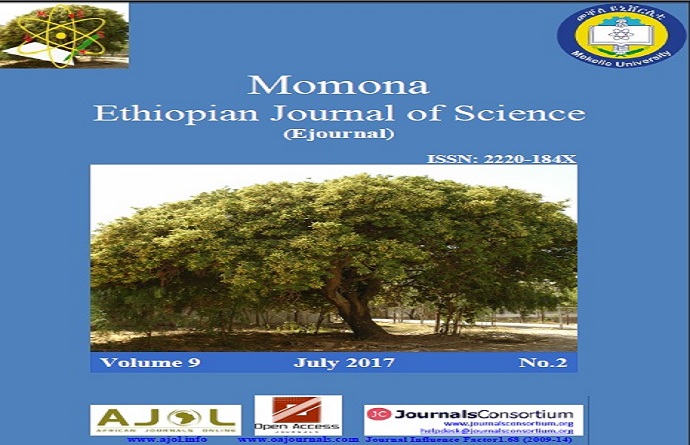Global Variations of Ionospheric Total Electron Content (TEC) Derived from GPS Global Ionospheric Maps
Abstract
This paper is aimed to investigate diurnal, monthly and seasonal variation of ionospheric total electronic content (TEC) obtained from two GPS satellites IGS and COD and to inspect mean VTEC Correlation between the two satellites by the year of 2008. TEC is defined by the integral of electron density in a 1 m2 column along the signal transmission path. It is an important parameter to monitor possible space weather impacts. The processed and archived data taken from IGS and COD satellites has been imported in to a MATLAB code which gave us the results of the value of VTEC. Results of the two satellites revealed that, Out of the selected equinox and solstice day’s maximum value of TEC is recorded on March 20/2008 over North and South west equator due to the maximum solar radiation reaching to the ionosphere of the Earth. On the contrary, the Minimum peak ionospheric TEC value is recorded on June 21/2008 over south Asia particularly Srilanka and Bangladesh due to emission of low solar radiation. As regards to monthly variations of ionospheric TEC, results of IGS and COD satellites show that highest mean TEC value is recorded on March and July recorded the least peak TEC value. Results regarding to seasonal variation also revealed that E-Season recorded maximum TEC value and least TEC value is recorded on J-Season. The observations of the two satellites also show that the mean TEC value presents stronger solar activity sensitivity at lower-latitude bands than the middle and high latitudes. In general, there was a very high correlation between Mean TEC value recorded by IGS and COD satellites by the year of 2008 in all low, middle and high latitudes.
Downloads
References
Anderson D & Fuller-Rowell, T. 1999. The ionosphere: Space Environment Topics SE-14, Space Environment Center. Boulder.
Bagiya, M. S., Iyer, K. N., Joshi, H. P., Thampi, S. V., Tsugawa, T., Ravindran, S., Sridharan, R & Pathan, B. M. 2011. Low-latitude ionospheric-thermospheric response to storm time electrodynamical coupling between high and low latitudes. Journal of Geophysical Research, 116(A1): A01303,
Bardford, W.P & Spilker, J.J.J. 1996. Global Positioning System: Theory and applications, American Institute of Aeronautics and Astronautics, Vol. I and II Washington DC, USA.
Bernhardt, P.A., McCoy, R.P., Dymond, K.F., Picone, J.M., Meier, R.P & Kamalabadi, F. 1998. Two-dimensional mapping of the plasma density in the upper atmosphere with computerized ionospheric tomography (CIT). Physics of Plasmas, 5: 2010–2021.
Best, C. L. 1991. Research methods in education. London: New York.
Daherty, P.H., Dehel, T., Klobuchar, J.A., Delay, S.H., Datta-Barua, S., de Paula E.R & Rodrigues, F.S. 2002. Ionospheric effects on low-latitude space based augmentation systems, Proceedings of ION GPS 2002, September 24-27, 2002, Portland, pp. 1321-1329, Oregon.
Hajj, G.A & Romans, L.J. 1998. Ionospheric electron density profiles obtained with the Global Positioning System: Results from the GPS/MET experiment. Radio Science, 33: 175–190.
Kenpankho, P., Watthanasangmechai, K., Supnithi, P., Tsugawa, T & Maruyama, T. 2011. Comparison of GPS TEC measurements with IRI TEC prediction at the equatorial latitude station. Earth Planets Space, 63: 365–370.
More inside the PDF
Copyright (c) 2018 Momona Ethiopian Journal of Science

This work is licensed under a Creative Commons Attribution 4.0 International License.
COPYRIGHT AND LICENSE POLICY
The Momona Ethiopian Journal of Science accepts the manuscripts for consideration with the understanding that the manuscript has not been published and is not under consideration for publication elsewhere. Only original articles will be considered for publication if they have been published previously as abstracts, but not if they have been published previously as extended abstract (>1000 words). This applies to both electronic and print versions of the journal. The authors should assign copyright ownership to the Editorial Office of MEJS in the event that the manuscript is accepted for publication in the Momona Ethiopian Journal of Science. All accepted manuscripts must be accompanied by a copyright statement signed by all authors. A copy of the copyright form will be supplied along with the final reviewed version of the manuscript that is sent for final proof- reading. Authors may make multiple copies of the form if necessary and send to the Editorial Office with author’s signature(s) even individually.
All articles published by Momona Ethiopian Journal of Science (MEJS) are Open Access under the Creative Commons Attribution License (http://creativecommons.org/licenses/by/4.0). Under this license, authors retain ownership of the copyright for their content, and anyone can copy, distribute, or reuse articles as long as the author and original source are properly cited. In all these cases for re-use, the authors will be given proper credit to the original publication in MEJS.
